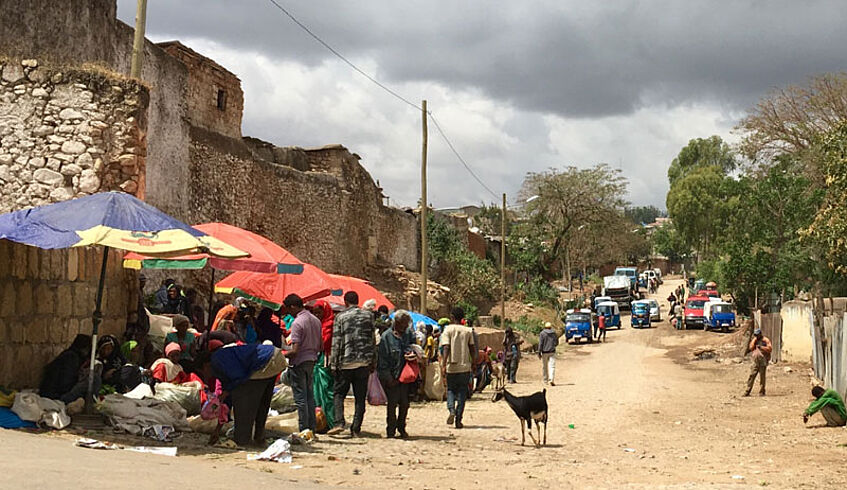
Harar city (Source: M. Borderon 2018)
Out of sight, out of mind – How research can help make vulnerable population visible
Principal investigator: Marion Borderon (IfGR, University of Vienna)
Research collaborators: Dr. Yoann Doignon (Geographer/Demographer, UCL, Belgium), Dr. Laurence Reboul (Statistician, AMU, France), Dr. Nega Assefa (Heath practitioner and researcher, Haramaya University, Ethiopia)
In the context of the project, a new Agreement on Academic Collaboration between Haramaya University in Eastern Ethiopia and University of Vienna has been signed. It seeks to build up a new research focus on the nexus of migration and environmental change between the two institutions.
Duration: 2017 - 2020
Funding: Postdoc Award 2017 (since february 2019, the case study of Kersa is also part of a H2020 project: AGRUMIG – 'Leaving Something Behind': Migration governance and agrarian change in 'home' communities - Experiences from Europe, Asia and Africa')
Background
Data on internal migration remains particularly patchy which in turns limits ability of assessing trends of migration. Contextual information has been lacking on the significance of rural out-migration in LMICs. Therefore, the question “what is happening in rural communities as a result of out-migration?” becomes second behind “How could we know what is happening in deprived rural areas?”.
Investigating the nexus between migration and climate change in rural settings in Ethiopia, we have taken the opportunity to use HDSS data, a high-potential data source. By tracking population changes -fertility, mortality, migration - the HDSSs (health and demographic surveillance systems) are filling a gap in developing databases which can provide a critical resource for migration researchers and be investigated to examine the practices and patterns of migration over place and time in rural areas particularly vulnerable to climatic change.
Established in 2007 in Kersa, district of eastern Hararege, Oromia region, Eastern Ethiopia, the Kersa Demographic Surveillance and Health Research Center (KDS-HRC) has been carrying out a longitudinal population-based tracking of about 148 000 individuals.
Our study seeks to understand what are the motivations and demographic or climatic events pushing people to move out. The KDS-HRC data are thus perfectly of interest to cross and combine biographic data at the individual and household levels (demographic attributes of the investigated individuals who stay/who go) with climatic and environmental data to unravel the logic of the migration decision and shed light on the pushing factors of outmigration in the studied area.
